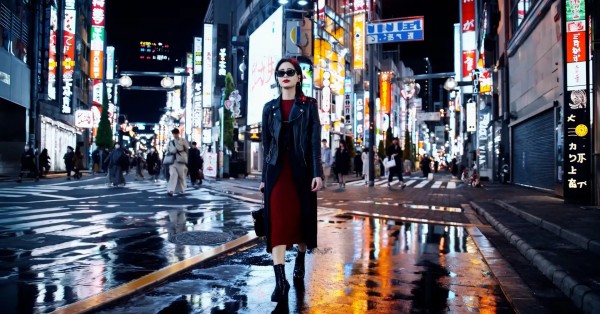AI and RAN – these two words are being uttered in the same breath far too commonly now. Didn’t we witness the solemnization of the AI-RAN Alliance in MWC 2024? Call it coincidence, or providence, it coincided nicely with the publication of our report “AI and RAN – How fast will they run?”
In popular media, much of the excitement about AI and RAN relates to how the improved capabilities in 5G RAN are empowering AI. There is a lot of justified interest in how the availability of nearly endless throughput and fine-grained network slicing can and is empowering numerous AI end-applications ranging from robotics to VR and driverless vehicles.
These are exciting possibilities, no doubt.
At Insight Research, we were always interested in the state-of-the-art of the RAN. However, we realized that precious little attention was being paid to how AI and ML are altering the very shape of the RAN at multiple levels—technical, commercial, and competitive.
We found these possibilities worth drooling over!
Thus we set about attempting to identify and quantify the impact of AI on the RAN.
Let us look at the technical impact. We identified four principal end-applications, and AI had the most impact on the RAN.
- As the name suggests, traffic optimization is a dynamic combination of various planning, execution, and troubleshooting methodologies for ensuring the solidity of the user experience KPI. AI-based technology alternatives are expected to address network optimization challenges without relying excessively on precedents, prior background information, and high-end computing infrastructure. For example, RL-based RAT selection can be banked upon to find an elegant solution to the prohibitively high processing overheads imposed by conventional optimization-based approaches. At its very core, RL relies on trial and error. This approach can be honed by combining it with smart classification and also interfacing it with conventional optimization methods. This is only one such example of AI aiding optimization. Let us look at traffic classification – Different algorithms, such as Reinforced Neural Networks and Convolutional Neural Networks, are combined for traffic classification.
- Caching within the 5G Radio Access Network (RAN) is a strategic approach to address the exponential growth in data demand and the need for ultra-low latency. By storing frequently accessed data closer to the user, RAN caching minimizes the distance data travels, reducing latency and offloading traffic from the core network. AI offers a bouquet of approaches toward addressing the most pressing challenges related to the what and the where of caching. They are also effective in user behavior prediction and simulation. Fully-Connected Neural Networks (FNN) are more global in nature and offer superior approximation if the function is closed and bounded, giving them a bird’s eye view suitable for determining the overall allocation of caching locations. CNNs tend to be more local in their spatial awareness and computationally less intensive, making them suitable for pinpointedly allocating timeslots. Autoencoders are preferred for the heavy-lifting task of identifying content suitable for caching. Reinforced learning scheme offers multiple options such as value and policy-based DQNs known for providing meaningful feedback to avoid overestimation and offer clear-cut demarcation in non-discrete inputs.
- Energy management in the 5G RAN is a critical concern, given the increased density of base stations and the heightened demand for continuous, high-speed connectivity. Efficient energy utilization reduces operational costs and addresses environmental concerns associated with large-scale network deployments. Traditional systems keep base stations active, even during low or no traffic periods, leading to unnecessary energy consumption. AI algorithms can predict traffic patterns based on historical data and real-time inputs, dynamically adjusting the operational status of base stations. For instance, AI can transition base stations into energy-saving sleep modes during predictable low-traffic periods. By analyzing environmental data, such as sunlight patterns or wind speeds, ML algorithms can predict optimal times for energy harvesting, ensuring maximum energy storage and reducing reliance on traditional power sources.
- Coding plays a pivotal role in ensuring reliable, high-speed data transmission. It’s not just about data representation; it’s about optimizing data flow, enhancing error correction, and ensuring robustness in diverse network conditions. Traditional coding techniques, while effective, can be computationally intensive and may not always adapt well to dynamic network conditions. Deep Learning models, particularly Neural Networks, have been explored for channel coding in 5G RAN. Machine Learning algorithms, trained on historical data, can predict the optimal modulation and coding scheme based on current network conditions, user mobility patterns, and traffic demand. AI algorithms can enhance traditional error correction techniques. For instance, by analyzing patterns of errors in received data, an AI system can predict future error patterns and adjust the error correction mechanism proactively, ensuring higher data accuracy and reduced retransmission rates. Deep Learning has been used to identify LDPC codes and subsequently reduce the decoding delay, analyze the tradeoff between LDPC codes and channel coding, develop error correction codes for nonlinear channels, and optimize the decoding algorithm to achieve non-convex minima. Autoencoders can be trained to perform both encoding and decoding tasks. Once trained on a dataset representing various channel conditions, these autoencoders can efficiently encode and decode data, often outperforming traditional algorithms in terms of error rates and computational efficiency.
For consideration of brevity, I have restricted the examples of AI usage in the above use cases.
The figure below ranks the end applications by their projected market sizes by the year 2028.
| AI end-application in the RAN | Rank in terms of market size in 2028 |
| Traffic Optimization | 1 |
| Energy Management | 2 |
| Caching | 3 |
| Coding | 4 |
Source: Insight Research
What is surprising is the realization that AI has been around in RAN management for longer than is imagined. This is true especially in the caching, energy management, and coding end-application. It is basically the traffic optimization end-application that has placed AI on the fast track in the RAN. The oversized role of traffic optimization can be attributed to the exacting demands placed on it in 5G networks and the role played by industry consortia, such as the Open RAN, in leaning upon AI to address these demands.
The complexity induced in traffic optimization has boosted the respective complexities of the other end applications, resulting in a healthy double-digit CAGR across all end applications. What’s more, the CAGR of the traffic optimization end application will be the least among all.
Clearly, second-hand complexity is good for business!
The story of AI in RAN gets more interesting when one considers the impact of AI on the RAN vendor marketplace. For many of the vendors, RIC is the principal launchpad for AI in the RAN. The architectural impact of the RIC is profound enough for principal mainstream vendors such as Nokia, Samsung, and Ericsson to have made it their own. Then there are a whole lot of entrants piggybacking on RI – VMware, Juniper, Qualcomm, Mavenir, Capgemini, and Fujitsu, among others. If this was not enough to shake the marketplace, there is a set of pathbreaking entrants leveraging the RIC/AI tango opening. These include Cohere, Aira, Rimedo, Net AI, PI Works, and Aspire Technologies. Their skepticism of RIC is unlikely to impede ZTE and Huawei from digging into AI. DeepSig and Opanga Networks have their own way of leveraging AI in the RAN. Speaking of AI, how can one ignore Nvidia? Unsurprisingly, the hottest piece of cake has its own way of multiplexing RAN and AI workloads on its GPU.
In conclusion, what does Insight Research postulate for the prospects of AI in the RAN?
The answer is very simple – Watch this space for more!






































